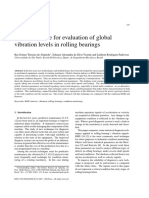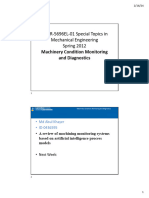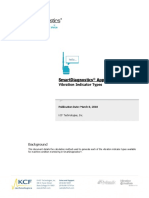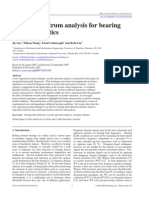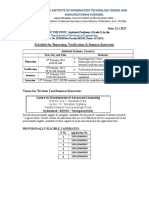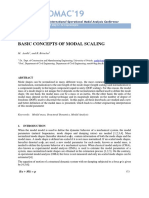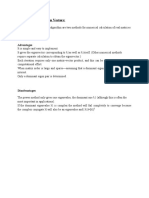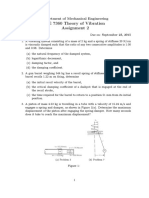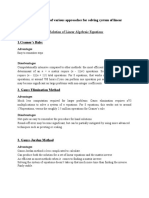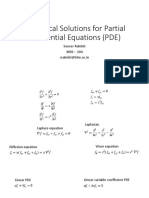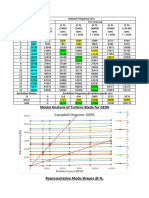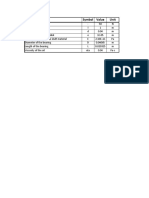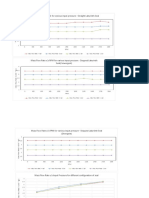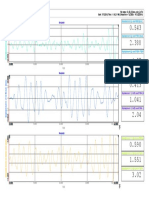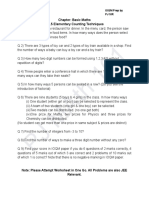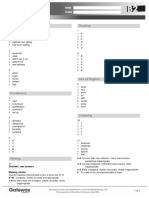0% found this document useful (0 votes)
91 views1 pageTrend Peak: Time Waveform Analysis and Statistical Comparison 01.04.2020
This document provides a summary of time waveform analysis (TWA) and statistical comparisons of vibration data. TWA analyzes are now carried out automatically and quickly using modern computing technology and AI. Key statistical parameters like skewness, kurtosis, standard deviation, and crest factor are explained and compared for different vibration signal examples to help identify issues like unbalance, misalignment, impacts, and random noise. TrendOPeak's AI-powered algorithms help continuously monitor asset health and guide maintenance without taking up much time.
Uploaded by
SAGI RATHNA PRASAD me14d210Copyright
© © All Rights Reserved
We take content rights seriously. If you suspect this is your content, claim it here.
Available Formats
Download as PDF, TXT or read online on Scribd
0% found this document useful (0 votes)
91 views1 pageTrend Peak: Time Waveform Analysis and Statistical Comparison 01.04.2020
This document provides a summary of time waveform analysis (TWA) and statistical comparisons of vibration data. TWA analyzes are now carried out automatically and quickly using modern computing technology and AI. Key statistical parameters like skewness, kurtosis, standard deviation, and crest factor are explained and compared for different vibration signal examples to help identify issues like unbalance, misalignment, impacts, and random noise. TrendOPeak's AI-powered algorithms help continuously monitor asset health and guide maintenance without taking up much time.
Uploaded by
SAGI RATHNA PRASAD me14d210Copyright
© © All Rights Reserved
We take content rights seriously. If you suspect this is your content, claim it here.
Available Formats
Download as PDF, TXT or read online on Scribd
/ 1













